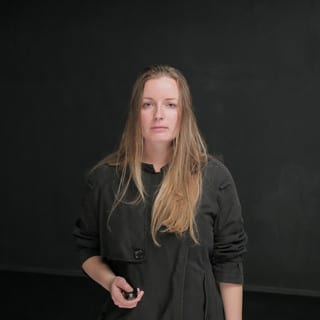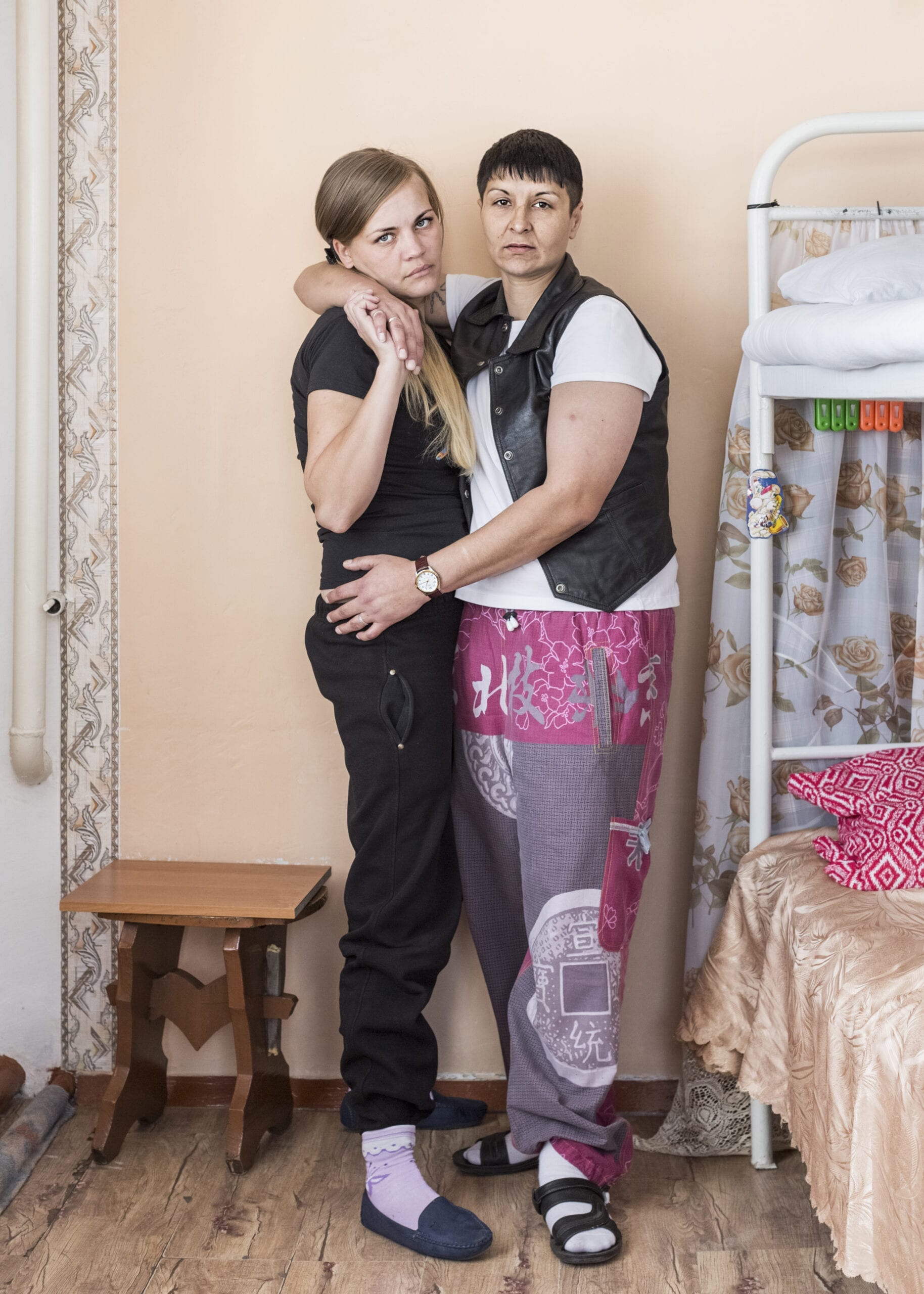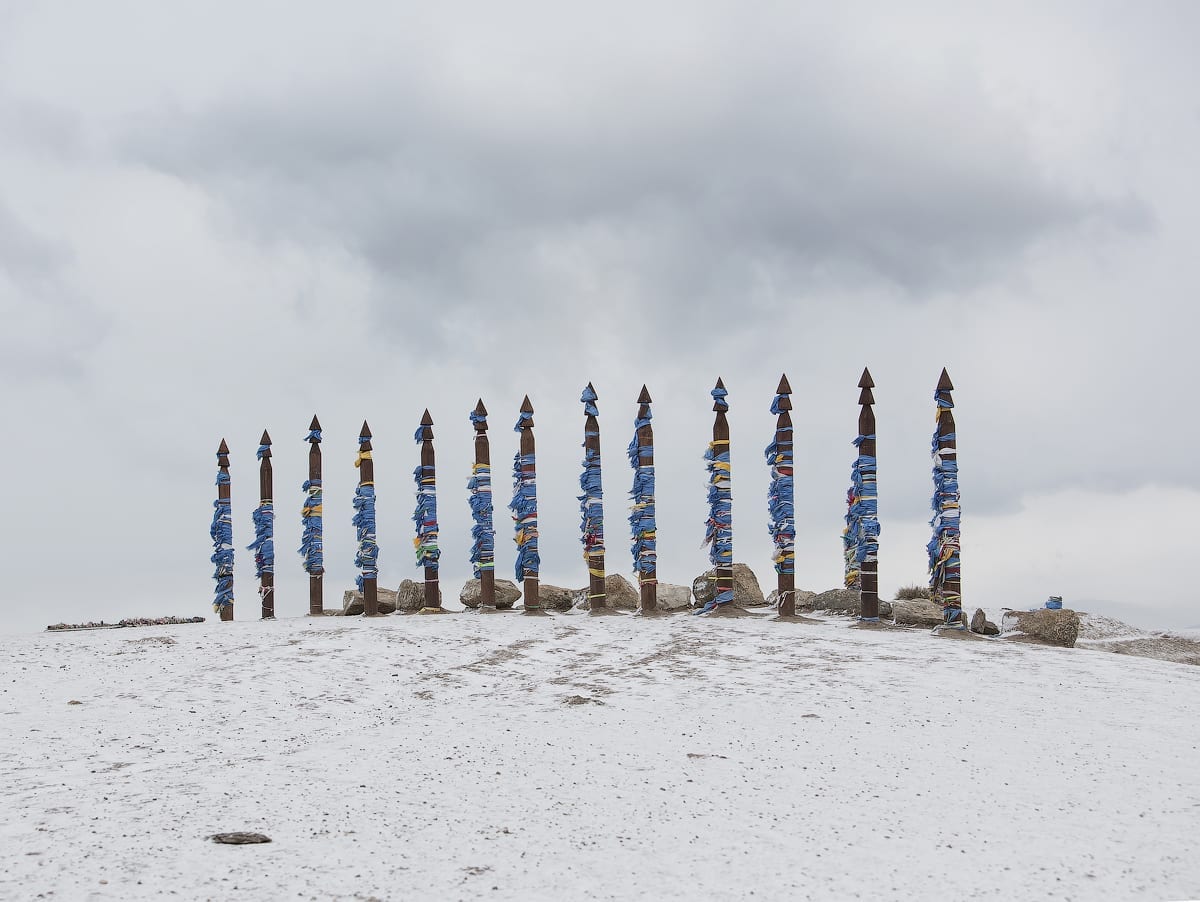
Elena Anosova, a Russian photographer from the Baikal region who is currently based in Moscow, won third prize in the Stories Category of the 2016 Pride Photo Award. Prompted by her own childhood experiences Elena explores in her series Section themes of identity, isolation and boundaries. Ivana Babic talked to her about these themes, her life, Russia, and her photography projects.
Your winning series of photographs is part of a trilogy centered on lives of women in closed institutions. Could you tell me more about the project?
Currently only the first part of the trilogy, about women in custody, is finished and published. My work on the other parts is still ongoing. Each part is different. Section is a very big project which was published in book form and shortlisted for the MACK’s 2016 First Book Award. The work that I selected from Section for Pride Photo Award is about couples, which is one of the aspects of the main theme. The photographs were taken in three very different closed institutions; one for recidivists, one for first-time offenders, and the third one was a labour camp for those who have already served part of their sentence and behaved well. Each place has a different atmosphere and different communities and interrelationships.
As a child you have spent some time in a closed institution yourself. How did that experience form you? Was it there that you discovered photography?
I was 12, seriously ill and badly in need of medical care. For several years I stayed at a boarding school with health care and suitable conditions for my physical rehabilitation. There I slowly recovered and at the same time I made real friends and got excellent education. I studied painting, sculpting and graphic design, and I was able to continue these activities during the holidays. Ten years later, I bought my first camera, when I started my work in the field of design and needed to photograph textures.
The biggest struggle for me in the institute was not the state of my health, but the fact that I could never be on my own and feel safe. There was no space for solitude, not even in the toilets. There were no gardens or rooms where you could go to be alone, and that is hard especially while following a strict daily routine. That kind of reflection and understanding only comes with age. Those insights are now very helpful in my present work.
Can you elaborate on how this helps you in your work?
Before I start shooting, I spend a lot of time with my subjects, not only when working on the Section series but also in other situations. It is very important for me to understand how my subjects live and breathe, how they feel. We talk, drink tea, and meet at different times over a longer period of time, a month or a few months. During our sessions, I have the opportunity to observe my subjects and I begin to understand what certain events, actions, locations and conditions mean to them. Then I start shooting with these impressions in mind.

What kind of audience do you intend to reach with your trilogy of women in closed institutions? What message do you want to share with your audience? What kind of feelings do you seek to evoke in them?
There is this Russian proverb that says: “No one is immune from poverty or imprisonment” and that was true in the past, and it is true even more so in today’s reality. Nonetheless, our society stigmatizes inmates. It does not matter whether the woman defended herself and her children from violence or if crimes were committed for selfish reasons. Once you have been in jail, you are forever branded. This, however, doesn’t mean she suddenly ceased to be a mother, a daughter, a bride, a neighbor, a teacher, a grandmother or a beauty… I show the faces of these women in the same way as those of any other woman of our society.
You mention elsewhere the romanticization of prison that exists with the rejection of reality of life in prison. Could you tell me more about this?
In Russia, there is a historical tendency to romanticize the prison theme. This is reflected in our culture, literature, music, and has a solid historical base. But at the same time, no one – almost no one except the prison community – provides support to former convicts. It is difficult to find a job, and a single mother, who spent time enclosed and doesn’t have a place to live or employment, can’t take her kids from the orphanage. These people struggle to re-socialize after the traumatic experience in prison, since there is hardly any support for them. Luckily, nowadays, there are a few charitable organizations and foundations that provide help.
What would you say it is like for the same-sex couples in closed institutions in Russia? Do they experience more stigma, less or equal to any other woman who has been in prison (once they are out)? How about life in prison?
It is important to know I only work with women; a man’s world and male prisons are radically different, with an intolerance towards the LGBT people resulting in murder and severe abuse.
Inside women’s prisons, couples are not stigmatized. Thirty to fifty years ago, the prison management was trying to avoid relationships from forming. Now they don’t explicitly interfere, but don’t encourage it either. Everything depends on the prison management.
Within the prison community opinions differ, just like in the outside society. Prison is a rather small society and everyone knows everything about each other. I got the impression that there is a tacit agreement on relations between women. I have often encountered the attitude that it is unimportant who is doing what with whom, what is important is whether one is a decent person. That is a good thing.
How does your other work connect to this series and this trilogy?
Boundaries and isolation are my main themes. I explore the boundary theme quite extensively in each part of the trilogy; social boundaries, geographical and geopolitical boundaries. There is a micro society everywhere, a community of people who have something in common, in which there exists a particular ‘climate’.

I really liked your Sagaan Sag series, where vivid objects and people are set against the vast landscape that is pure and intimidating. What have you learned about that type of isolation (by vast space, and not by being in a closed institution) while taking those photographs? How does it compare to the first type of isolation?
Sagaan Sag, on the Olkhon Island (Lake Baikal), is a sacred place where cultural boundaries and religions intersect. In my childhood I spent a lot of time there. I have observed how this quiet and private space transformed into a tourist mecca. I shoot in the most difficult period of the year, in December and January. This is the time of the year when Lake Baikal just begins to freeze up and a huge amount of water evaporates into the atmosphere, isolating the island from the world. There are no tourists because of the extremely cold temperatures and the lack of ferry connections, so the space ‘returns to itself’, leaving only traces and a small number of local residents. By capturing different objects of human activity against the backdrop of a never changing landscape, I draw attention to the pettiness of our size and that we, as mankind, are transient in relation to the vastness of time and space.
What’s next for you? Will you continue exploring the aspects of isolation?
Currently I continue my work in the far north of Russia, again on the theme of isolation. There is this very remote village in the district of the Nizhnaya Tunguska River. You can get there only twice a month by helicopter. Modern civilization has only penetrated into this territory very slowly and sporadically. This ‘encapsulation’ in time and space, imbued with mythology, is unique and is associated with my family, as a big part of my family has been living there for more than 300 years.
